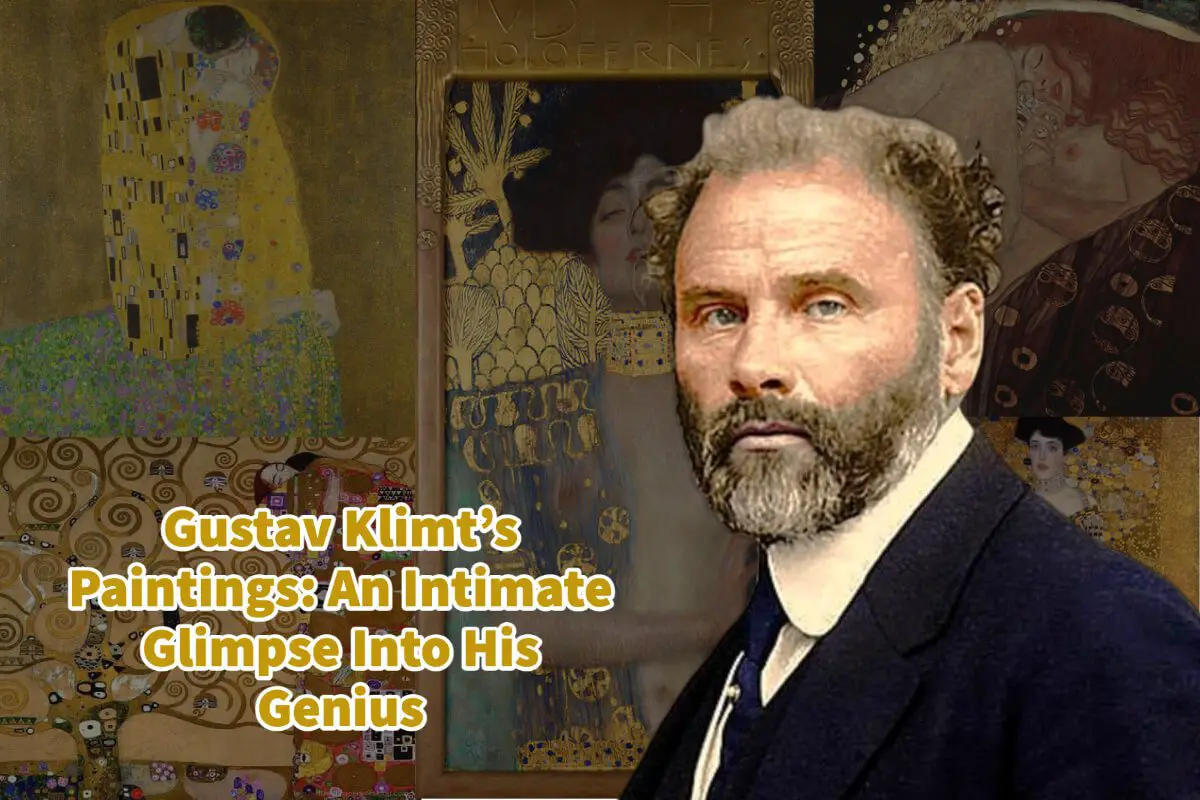Gustav Klimt is one of my favorite artists. Many of his paintings are timeless masterpieces.
Gustav Klimt is widely regarded as one of the most influential artists of the 20th century. His innovative and daring approach to art and unique style and vision have made him an icon in modern art. Klimt’s paintings are celebrated for their sensuality, symbolism, and intricate details, which have captivated audiences for over a century.
About Gustav Klimt – A Genius of An Artist
To understand Gustav Klimt, we can go back to the beginning to see how he developed from an early age.
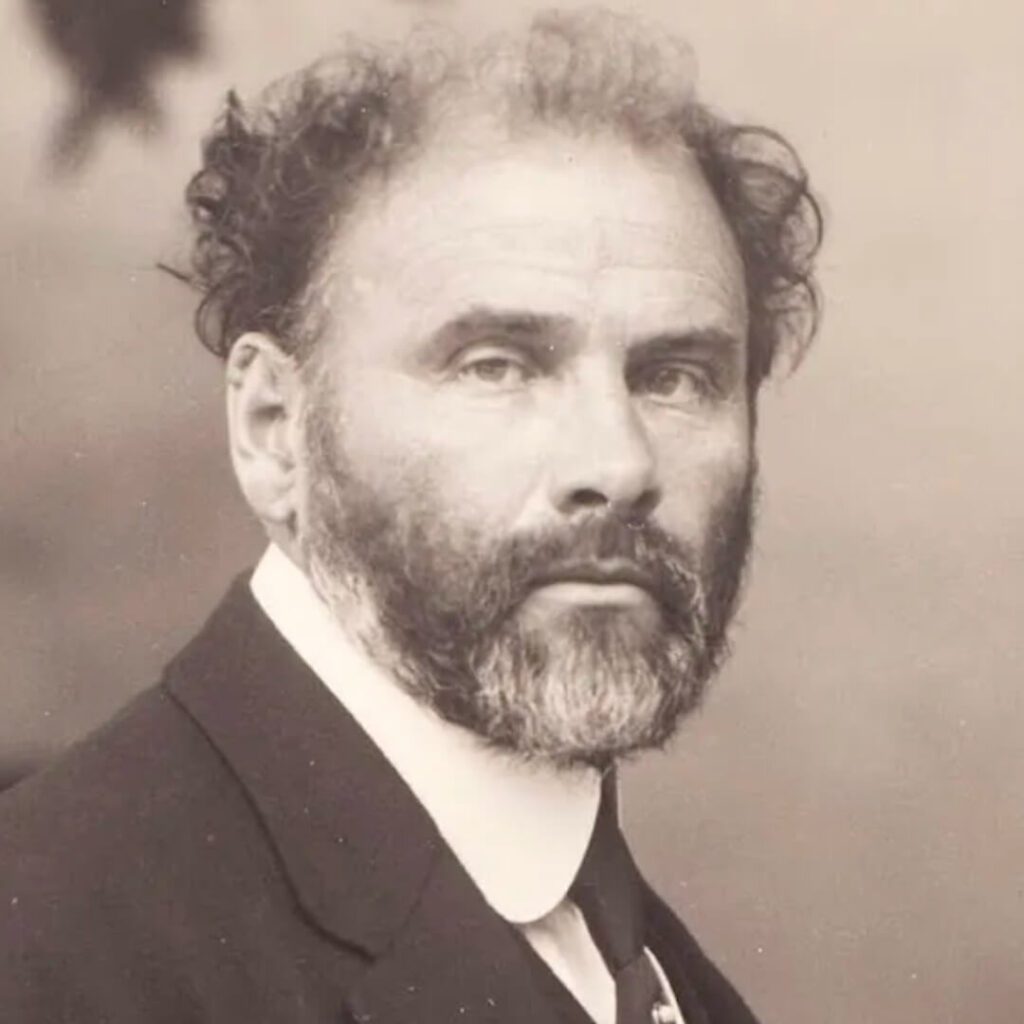
Born in Austria in 1862, Gustav Klimt started his artistic journey young. He studied at the Vienna School of Arts and Crafts, where he honed his skills in drawing and painting.
Klimt’s early work was heavily influenced by the Art Nouveau movement, characterized by its decorative style and emphasis on natural forms.
As he progressed as an artist, Klimt developed his style, marked by a fascination with the human form and a preoccupation with the mysteries of life and death. Klimt’s paintings often depicted the female form, which he imbued with a sense of eroticism and sensuality that was groundbreaking for its time.
Gustav Klimt’s – The Kiss
One of Klimt’s most famous works is the painting “The Kiss,” was completed in 1908. This painting depicts a couple locked in a passionate embrace, surrounded by intricate patterns and symbols.

“The Kiss” is a perfect example of Klimt’s unique style, which blended traditional techniques with a bold and innovative approach to form and composition.
During His Lifetime, His Art Work was Not Always Accepted
Klimt’s work was not always well-received by the establishment of his time. He was often criticized for his provocative subject matter and departure from traditional art forms.
Despite this, Klimt remained committed to his artistic vision, and over time, his work gained recognition and acclaim.
Today Gustav Klimt Is Celebrated As An Important Artist
Today, Gustav Klimt is celebrated as one of the most influential artists of the modern era. His paintings are highly sought-after by collectors and art enthusiasts alike, and his influence can be seen in the work of countless contemporary artists.
Klimt’s legacy continues to inspire and captivate audiences, as his paintings offer an intimate glimpse into his genius and profound understanding of the human experience.
Gustav Klimt’s 10 most important works of art
During this lifetime, Klimt produced many important works of art. Here are ten of his most important works of art and why they are essential. Each of these works shows us his unique artistic genius.
“The Kiss” (1908) – By Gustav Klimt

The Kiss painting is arguably Klimt’s most famous work, depicting a couple in an intimate embrace, surrounded by a golden aura of patterns and symbols. It represents Klimt’s mastery of combining traditional techniques with innovative compositions and symbolism.
“Portrait of Adele Bloch-Bauer I” (1907) – By Gustav Klimt
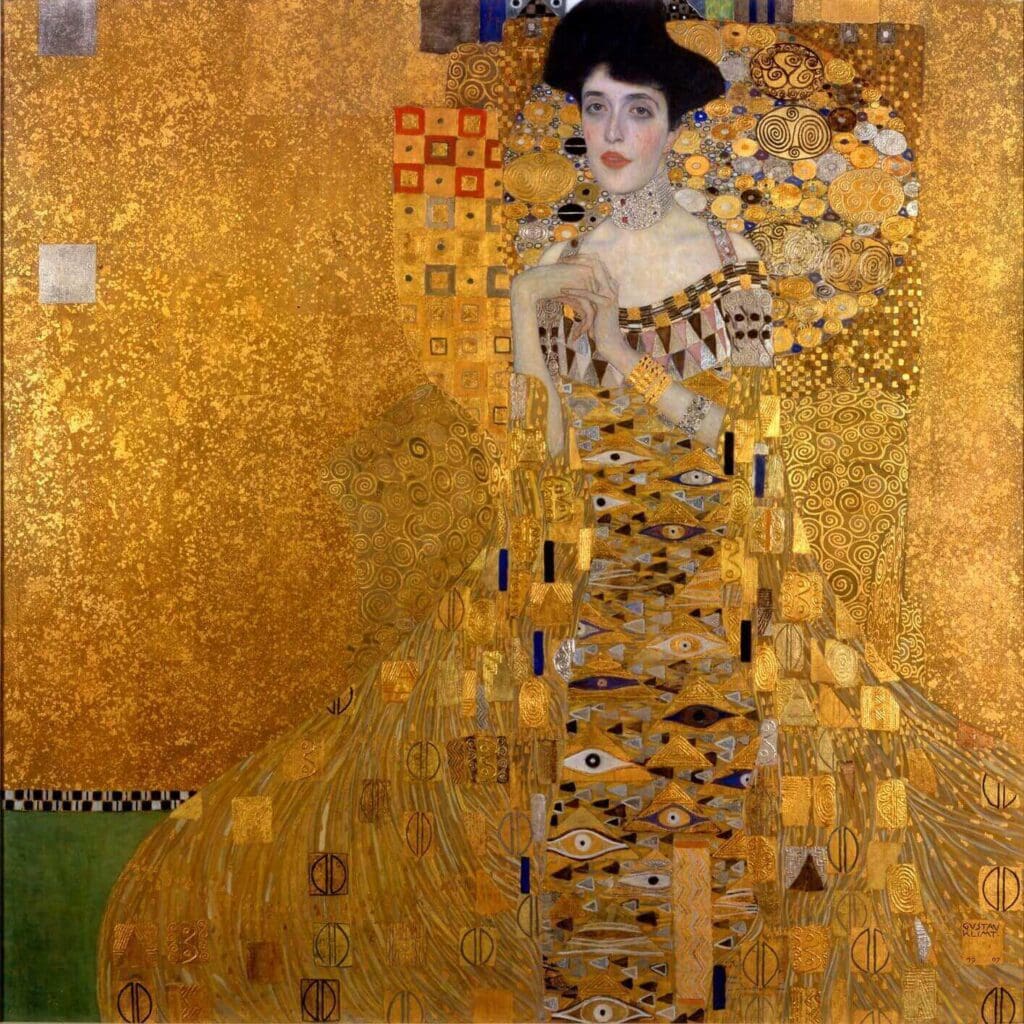
The Portrait of Adele Bloch-Bauer is a portrait of a wealthy Jewish socialite and is a stunning example of Klimt’s use of gold leaf and his ability to create mesmerizing patterns and textures. The painting was also the subject of a high-profile restitution case, which brought attention to the legacy of Nazi-looted art.
“Judith and the Head of Holofernes” (1901) – By Gustav Klimt
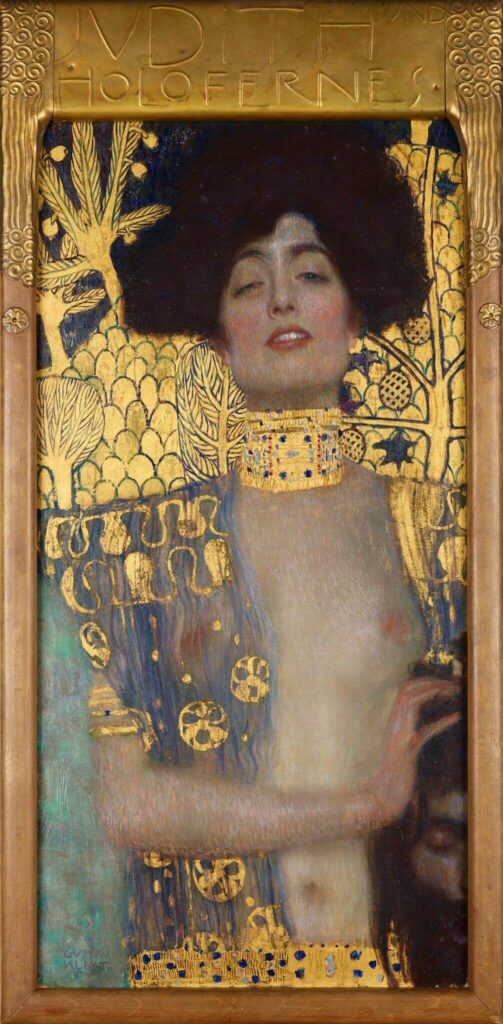
Judith and The Head of Holofernes painting depicts the biblical story of Judith slaying the Assyrian general Holofernes but with a sensual and erotic twist. It showcases Klimt’s fascination with the female form and ability to infuse traditional subject matter with his unique style.
“Beethoven Frieze” (1902) – By Gustav Klimt

Beethoven Frieze is a monumental frieze created for an exhibition in Vienna and featured a series of symbolic figures and motifs inspired by Beethoven’s Ninth Symphony. It showcases Klimt’s ability to convey complex ideas through intricate patterns and symbols.
“Portrait of Emilie Flöge” (1902) – By Gustav Klimt
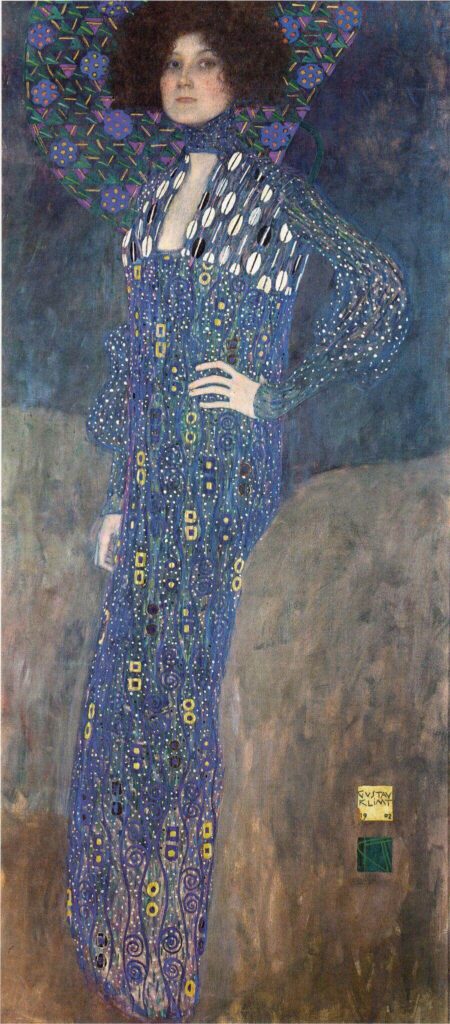
The Portrait of EmilieFloge is a portrait of Klimt’s long-time companion and muse and is a testament to his skill in capturing the essence of his subject. The painting features Flöge in an elegant dress, surrounded by swirling patterns and symbols.
“Tree of Life” (1905) – By Gustav Klimt
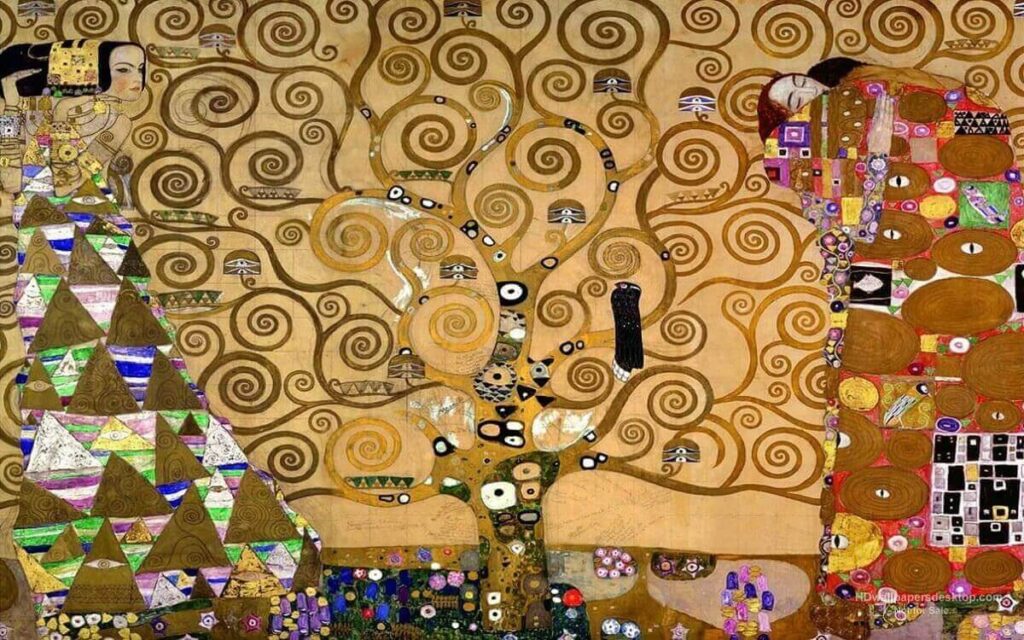
The Tree of Life painting depicts a tree with swirling branches and roots, surrounded by various symbols and motifs. It represents Klimt’s interest in the natural world and his ability to create mesmerizing patterns and textures.
“The Three Ages of Woman” (1905) – By Gustav Klimt
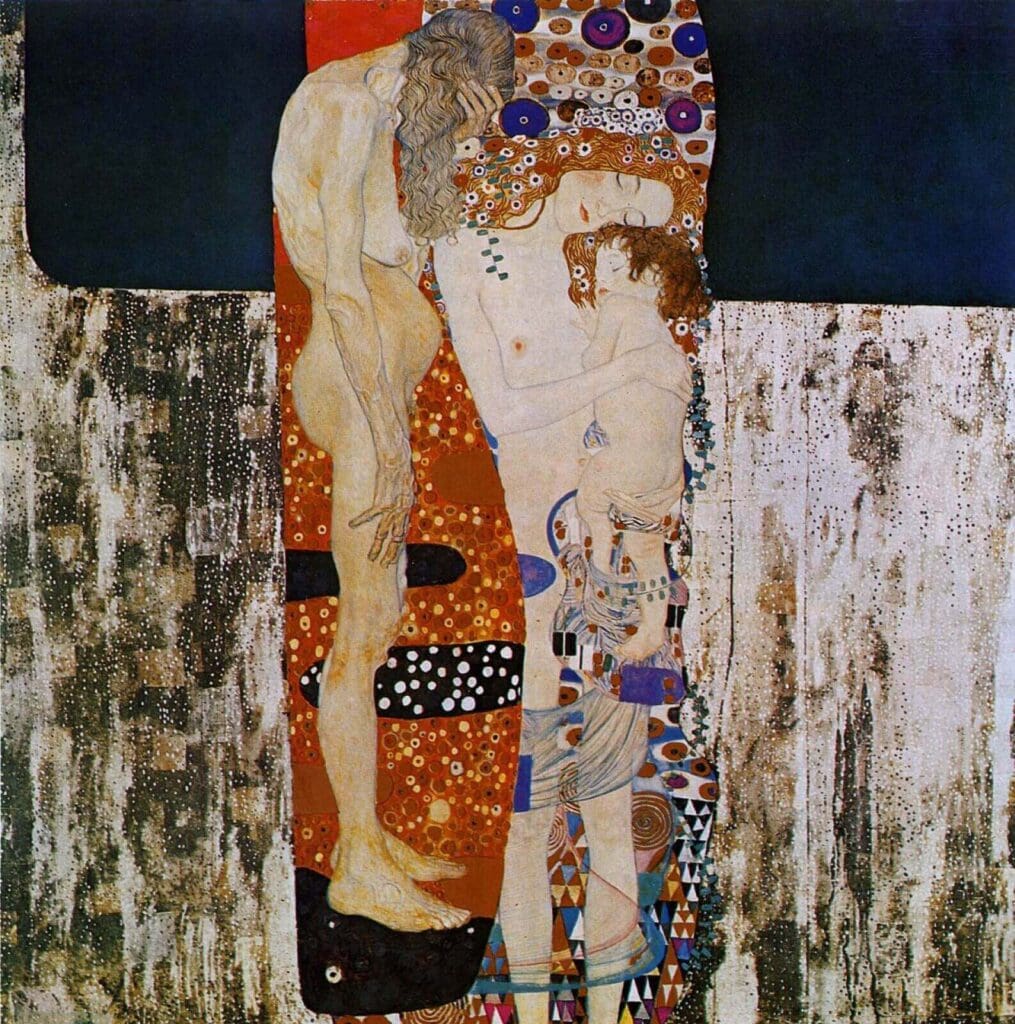
The Three Ages of Woman painting depicts a woman in three different stages of life, surrounded by various symbols and motifs. It showcases Klimt’s ability to capture the passage of time and life cycles through his art.
“Water Serpents I” (1904) – By Gustav Klimt
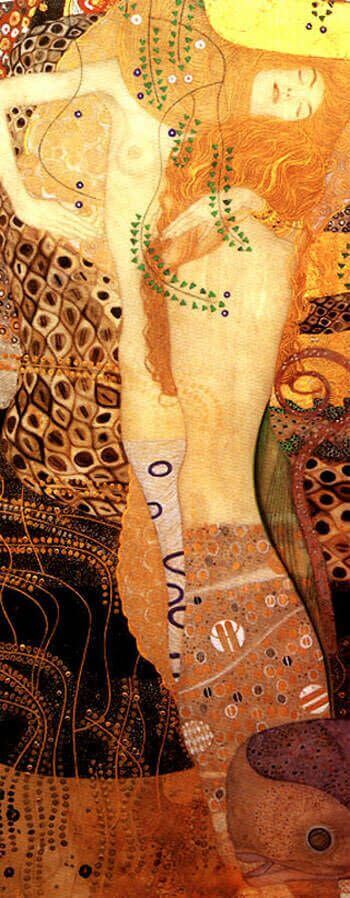
The Water Serpents I am painting depicts two women intertwined with a serpent, surrounded by patterns and symbols. It showcases Klimt’s fascination with the female form and his ability to create sensual and erotic works of art.
“Danaë” (1907-1908) – By Gustav Klimt

The Danae painting depicts the mythological figure of Danaë, who Zeus seduced in the form of golden rain. It showcases Klimt’s ability to combine classical subject matter with his unique style and symbolism.
“Adele Bloch-Bauer II” (1912) – By Gustav Klimt
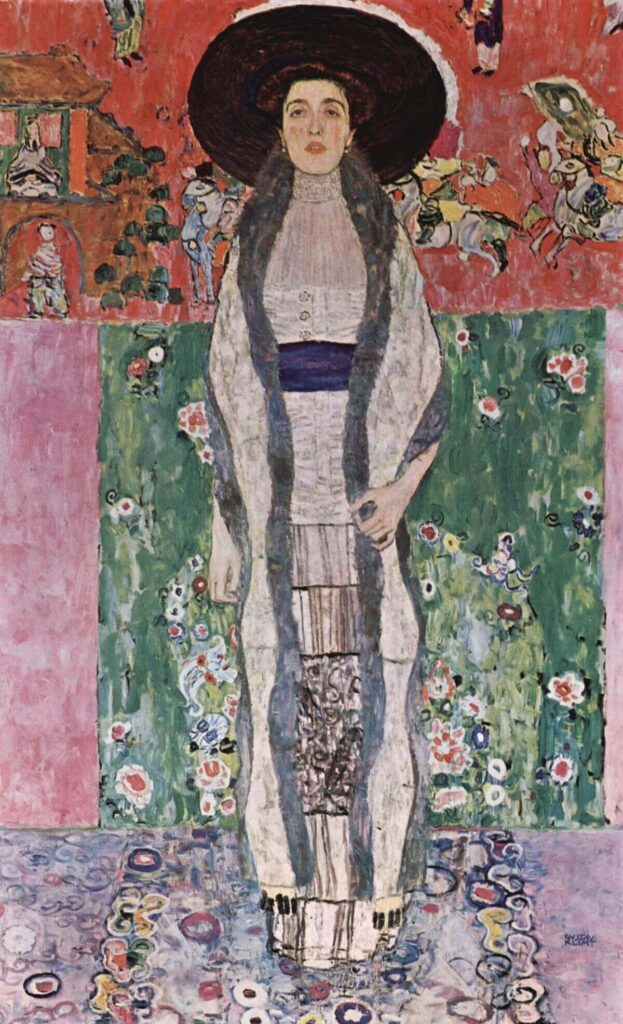
This portrait of Adele Bloch-Bauer was created several years after the first portrait and featured a more abstract and stylized representation of the subject. It showcases Klimt’s ability to evolve and adapt his style while maintaining his signature use of intricate patterns.
These ten works of art demonstrate Klimt’s mastery of form, composition, symbolism, and the human experience. They showcase his ability to create mesmerizing and sensual works of art that continue to captivate audiences today. These timeless works firmly establish Klimt’s legacy as a genius artist.
They also show us why Gustav Klimt continues to be a significant artist; his work shows pure artistic genius.
Anita Louise Art is dedicated to art education, great artists, and inspiring others to find and create their art. We love art that uplifts and inspires. #ArtToMakeYouSmile! #ArtToMakeYouHappy!
If you are interested to see any of my art, you can find out more by clicking here. If you are interested in what inspires me and my paintings, you can discover more by clicking here.
We have a free newsletter and would love you to be part of our community; you can subscribe to the newsletter by clicking here. If you have any questions, I would be happy to talk to you. You can reach me, Anita, by clicking here.
Subscribe to our Anita Louise Art YouTube Channel with great videos and information by clicking here.
Join us for our podcast “5 Minutes With Art.” Spend just 5 minutes a week with us to discover and learn about great art and artists. You can find out more about our podcast by clicking here.
Frequently Asked Questions About Gustav Klimt
Who is Gustav Klimt?
Gustav Klimt was an Austrian painter and a prominent figure in the Art Nouveau movement. He lived from 1862 to 1918.
What is Gustav Klimt famous for?
Gustav Klimt is famous for his decorative and erotic paintings and his use of gold leaf in many of his works.
Where can I see Gustav Klimt’s paintings?
Gustav Klimt’s paintings are in many museums and galleries worldwide, including the Belvedere in Vienna, Austria, and the Museum of Modern Art in New York City.
What is the meaning behind Gustav Klimt’s use of gold leaf in his paintings?
Gustav Klimt’s use of gold leaf was intended to convey a sense of luxury and opulence and highlight the importance of the figures depicted in his paintings.
Was Gustav Klimt married?
No, Gustav Klimt never married, but he is known to have had many romantic relationships throughout his life.
Did Gustav Klimt have any children?
Although the exact number is unknown, Gustav Klimt had at least 14 children.
Did Gustav Klimt belong to any artistic movement?
Gustav Klimt was part of the Art Nouveau movement, which was popular in Europe from the late 19th to early 20th century.
Was Gustav Klimt controversial in his time?
Yes, Gustav Klimt’s erotic and provocative paintings were considered controversial during his time, and he faced criticism from some members of the public and the art establishment.
What is the legacy of Gustav Klimt?
Gustav Klimt’s legacy includes his significant contributions to the Art Nouveau movement and his lasting influence on modern art and design. His paintings continue to be celebrated and admired by people around the world.
Related Questions
Who Was Gustav Klimt Inspired By?
Many people know Gustav Klimt as the artist who produced the famous 1907 painting “The Kiss.” The Kiss is a masterpiece of two figures that melt into each other with a hungry embrace. Many artists have been inspired by this artwork and created variations of it.
By clicking here, you can learn more by reading Who Was Gustav Klimt Inspired By?
Another Painter Who Has Similar Styles Like Gustav Klimt
The Austrian artist Egon Schiele, another painter, is known to have the same style as Gustav Klimt. Schiele was Klimt’s protege; you can see the similarities in their styles when you compare some of their artwork. Both of them influenced the Vienna Modernism movement.
By clicking here, you can discover more by reading Another Painter Who Has A Similar Styles Like Gustav Klimt.
Similarities Between Claude Debussy And Claude Monet
Claude Debussy is a musical composer. Claude Monet is an artist. They are both considered Impressionists and were not afraid to break from the tradition of their day to create something new. Both Debussy and Monet greatly influenced many artists that went after them.
By clicking here, you can learn more by reading Similarities Of Claude Debussy And Claude Monet.

